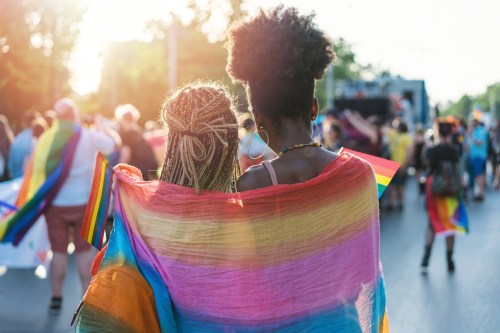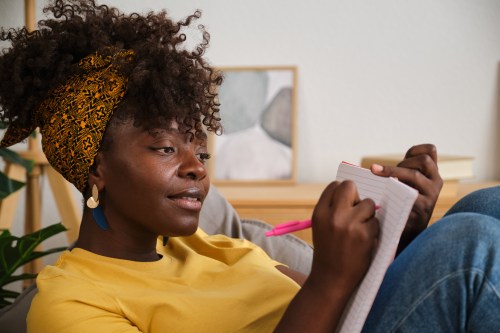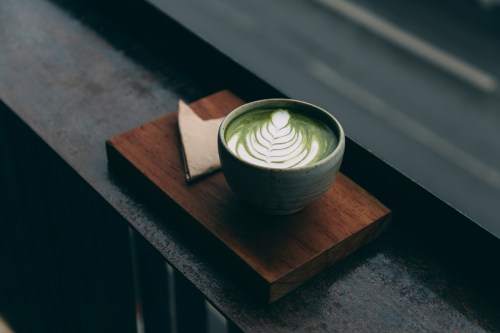Our editors independently select these products. Making a purchase through our links may earn Well+Good a commission
Research notes that more than half of the LGBTQ+ population identifies as bisexual. But given the alienation bi+ people—an umbrella term for those who are bisexual, polysexual, pansexual, and omnisexual—face within the community, you wouldn’t necessarily know it.
According to LGBTQ+ activist Robyn Ochs, editor of the anthology Getting Bi: Voices of Bisexuals Around the World and Recognize, the “B” for “bisexual” that got added to the acronym in the late ’80s thanks to the hard work of bisexual activists was mostly performative. “The “B” got added, but that didn’t mean that ‘LGBTQ+’ suddenly became welcoming of bi+ individuals,” she says.
It’s still too often the case that bi+ folks face both overt and covert biphobia within the LGBTQ+ community, which contributes to compromised mental health for bi+ people. And, as a bisexual writer and activist myself, I can personally attest that biphobia is even more devastating and isolating when it comes from within the LGBTQ+ community—my own community. “For the health of the LGBTQ+ community, we need to banish the biphobia within it,” says Ochs. Below, bi+ activists share ideas for how to eliminate biphobia in the LGBTQ+ community, which should be more inclusive of bi+ people.
5 ways to end a history of biphobia in the LGBTQ+ community
1. Quit saying that the “bi” in bisexuality reinforces the binary
One of the most damaging and widespread myths around bisexuality is that it reinforces the gender binary, or the idea that there are just two genders: men and women. That’s not true, as evidenced by the 1990 Bisexuality Manifesto which reads, “Bisexuality is a whole, fluid identity. Do not assume that bisexuality is binary or duogamous in nature: that we have “two” sides or that we must be involved simultaneously with both genders to be fulfilled human beings. In fact, don’t assume that there are only two genders.”
Unfortunately, this myth is one that holds steady and contributes to biphobia in the LGBTQ+ community. In my DMs just last week, someone said, “It’s messed up that you identify as bi when you’ve literally dated someone non-binary.” And another person said, “I don’t know why you would identify as bisexual when you could identify as pansexual and nod to the fact that you date non-binary people.”
What’s key to remember is that bisexuality may have a slightly different definition depending on who is defining it, says Ochs. For example, many define bisexuality either as attraction to two or more genders, or as the attraction to those whose genders are similar and also dissimilar to their own. My personal favorite definition of bisexuality is one put forth by Ochs: “I call myself bisexual because I acknowledge that I have in myself the potential to be attracted—romantically and/or sexually—to people of more than one gender, not necessarily at the same time, not necessarily in the same way, and not necessarily to the same degree.”
The bottom line? “Listen to the bi+ people who say that their identity includes nonbinary people,” says Ochs.
2. Learn the real LGBTQ+ history of bisexuality
Despite what popular movies like Stonewall, How To Survive a Plague, Milk, and The Normal Heart might have you believe, it wasn’t just white gay men who have been on the frontlines of change. Bisexual, trans, and Black, Indigenous, people of color (BIPOC) are often left out of the narrative. Did you know, for instance, that self-identified drag queen, trans woman, and activist Marsha P. Johnson played a key role in the 1969 Stonewall Uprisings, which are now known as the first-ever Pride as well as a pivotal point in the fight for LGBTQ+ equality?
Ignoring the hand that bisexual people—and more specifically, transgender and Black bisexual people—have played in the LGBTQ+ movement from the start is not just biphobic, racist, and transphobic—it’s also ahistoric. Educate yourself by engaging with the content on Bi History’s Instagram, read this article about bisexuality, put out by GLAAD, and buy We Are Everywhere: Protest, Power, and Pride in the History of Queer Liberation by Matthew Riemer and Leighton Brown
3. Banish commentary that perpetuates biphobia in the LGBTQ+ community
The first step for ending biphobia in the LGBTQ+ community is acknowledging that it already exists. “Whenever I post about biphobia on my Instagram, there’s a weird skepticism from people who aren’t bi+ who follow me about whether or not it’s real,” says Gabrielle Alexa Noel, bisexual advocate, founder of Bi Girls Club, and author of the forthcoming book, How To Live With the Internet and Not Let It Ruin Your Life. To be clear, it’s sadly very very real.
Next, become aware of when you’re experiencing biases against bi+ people based on myth and misconception. Don’t want to date someone bi+ because you think they’ll cheat on you? That’s biphobic. Don’t want to date someone bi+ because you think they’re more likely to give you an STI than your monosexual partners? Biphobia again. Nervous you won’t be enough for someone bi+? More biphobia.
Once you recognize when biases come up, as psychologist David Amodio, PhD, previously told Well+Good, “You [can] make sure these biases don’t influence your behavior.”
4. Stand up against biphobia
Once you’ve recognized and begun to address your own biphobia, you can begin recognizing when other people—regardless of their gender or sexual orientation—are being biphobic as well. And then, call them in. “It can’t be just out bi+ people who respond to instances of biphobia,” says Ochs.
Bisexual writer and activist Olivia Zayas Ryan agrees adding, “just as bisexual folks would go to bat for lesbian and gay people if someone said something blatantly homophobic or lesbophobic, gay and lesbian folks should be standing up against biphobia.”
In any group of people, it just takes one biphobic comment to make bi+ people feel unsafe and unwelcome—and just one person speaking out against it can make a big difference. “Publicly responding to biphobic comments tells bi+ that you’re an ally, while also educating everyone about what behavior is and is not allowed in your space,” says Ochs.
5. Trust that bisexual folks are invested in the queer community
“There’s this weird, widespread assumption that if bi+ women are embraced by the LGBTQ+ community, we’re going to sully the space by bringing our cis-het male partners,” says Ryan. This is false.
For starters, not all bi+ women date men. Furthermore, it’s important to understand that bi+ people are LGBTQ+ and are equally invested in maintaining the safety and queerness of LGBTQ+ spaces. “I just wish people would trust that bi+ people don’t have any interest in ruining the vibe of LGBTQ+ spaces,” says Noel.
It sounds obvious, but “we, bi+ people, benefit from being in LGBTQ+ spaces, too,” she adds.
Oh hi! You look like someone who loves free workouts, discounts for cult-fave wellness brands, and exclusive Well+Good content. Sign up for Well+, our online community of wellness insiders, and unlock your rewards instantly.
Sign Up for Our Daily Newsletter
Get all the latest in wellness, trends, food, fitness, beauty, and more delivered right to your inbox.
Got it, you've been added to our email list.











